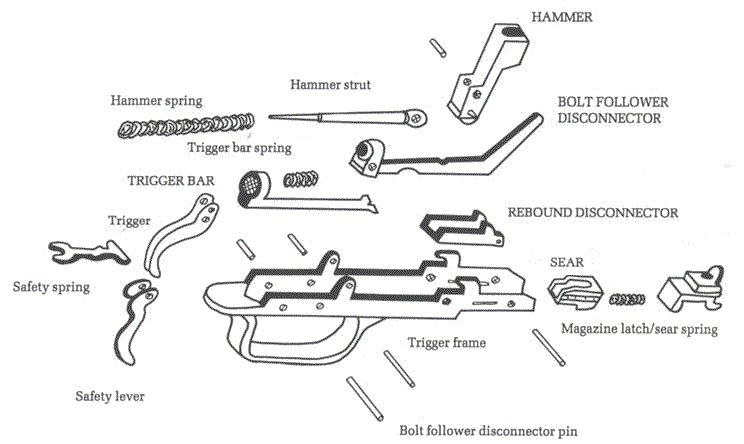

![]()
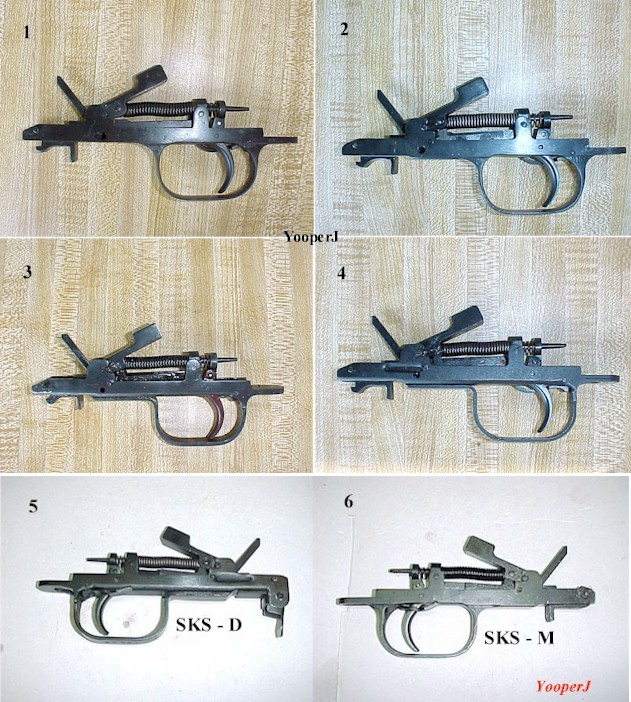
1. Milled - Early Russian 1949-1953.
2. Milled - Late Russian 1953-1955/8, Early Chinese 1956-1980, Romanian, Albanian, East German, Yugoslavian, North Korean.
3. Stamped - Late Chinese 1970's-1990's.
4. Stamped - Late Chinese 1970's-1990's.
5. "D" model using AK magazines. Note the clip release. May vary in design.
6. "M" model using AK magazines. Note the clip release. May vary in design.
![]()
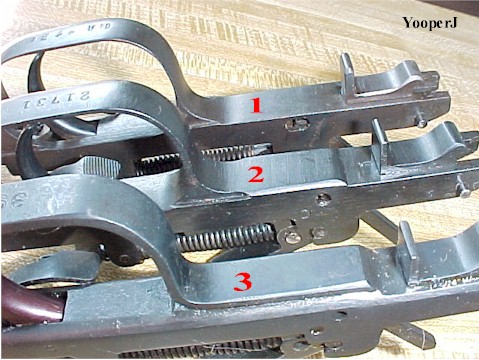
1. Milled Early Russian 1949-1953 - Note flat base.
2. Milled - Late Russian 1953-1955/8, Early Chinese 1956-1980, Romanian, Albanian, East German, Yugoslavian, North Korean - Note the raised hump.
3. Stamped - Late Chinese 1970's-1990's - Note the seam between trigger guard and housing bottom.
![]()
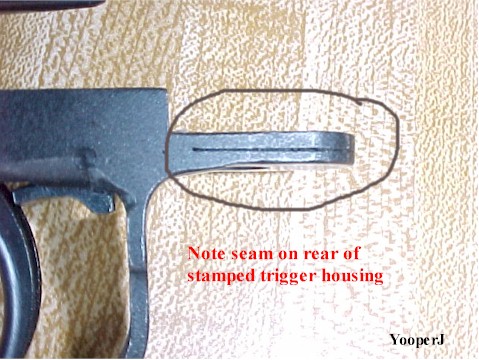
Stamped - Late Chinese 1970's-1990's - Note the seam between trigger guard and housing bottom.
![]()
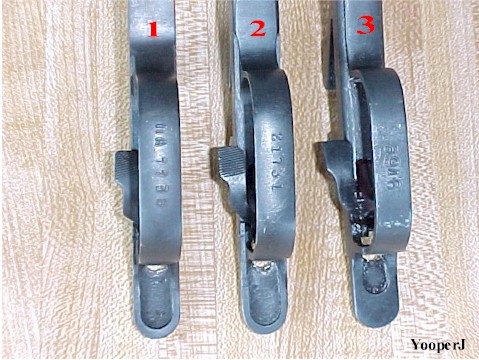
1. Milled Early Russian 1949-1953
2. Milled - Late Russian 1953-1955/8, Early Chinese 1956-1980, Romanian, Albanian, East German, Yugoslavian, North Korean.
3. Stamped - Late Chinese 1970's-1990's - Note the lack of grooves on safety lever and absence of milling marks at rear of housing.
![]()
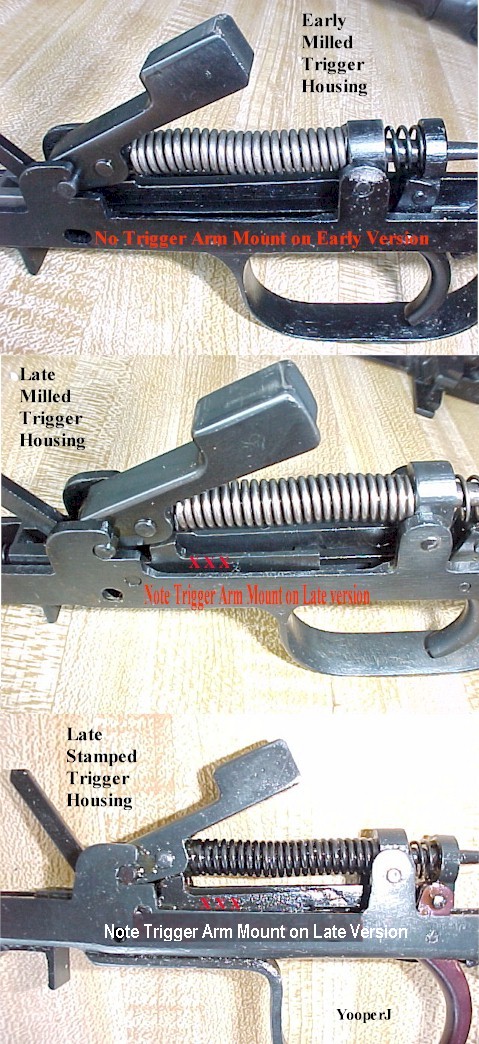
The Early Russian 1949-1953 assemblies did not use a Trigger Arm Mount, also note elongated hole below trigger.
All other countries used the "Late Milled Housing" and China also used the "Late Stamped Housing".
![]()
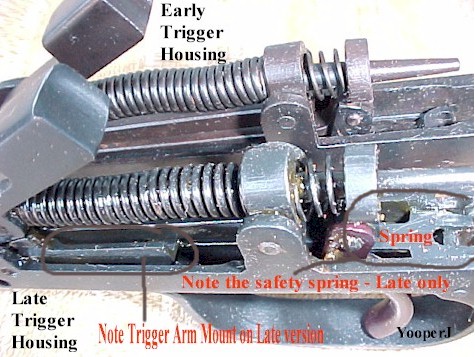
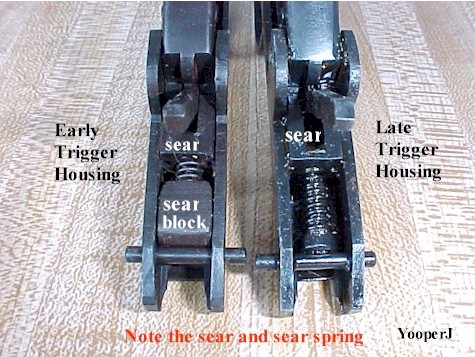
The Early Russian 1949-1953 assemblies used a different Sear and Spring arrangement.
Russian 1952-1955/6 and all other countries used the "Late Trigger Housing" arrangement.
![]()
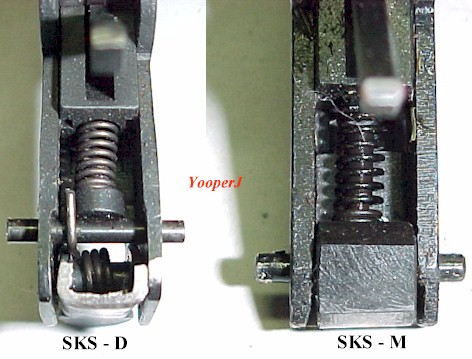
Note the differences in the sear block and the clip release mechanism for the removable AK style magazine. Your M or D could be of either variety. These just show the two I have examined.
Sear - Sear Spring - Magazine Catch. Sears are slightly different but perform the same function.
![]()
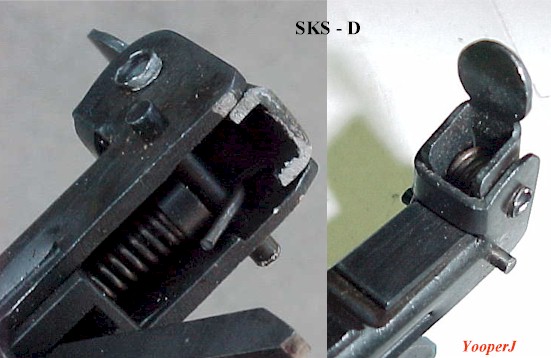
Note the modification made for the AK style magazine. Shown is top view on left and bottom view on right.
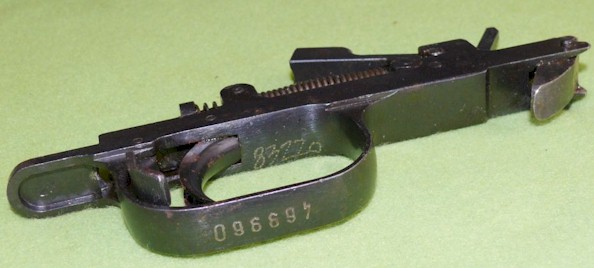
Yugoslavian trigger group modified to accept AK magazines
![]()
Late Chinese with a spot welded trigger guard.
![]()
Reworking an SKS Trigger, thanks to Fragger

First thing I did was order a new sear from Paul's
Guns-The SKS Man :>) (no kidding)
Next remove the hammer, sear retaining pin, spring, and mag. catch.
This is going to be tough to explain. The sear has a slot cut on either side
that it rides back and forth on. On the frame is a rail / rib that mates into
this slot. At the end of the rail / rib is a stop on both sides that will stop
the reward travel of the sear. On the sear, at the end of the slot, is an angle
that mates with this stop. If you take material off of this angle, BUT still
maintain the angle, the sear will move closer to the trigger bar. Moving the
sear closer to the trigger bar lessens the first stage length of pull. You DON'T
want it to touch the trigger bar. I didn't measure the distance but would
guesstimate it to be at least .050 gap between the contact points of the trigger
bar and the sear. By the way point that the trigger bar contacts the sear is
just above the under cut on the sear. Now that the sear is in a closer
relationship with the trigger bar you'll have to remove metal off of the end of
the sear that slides under the hammer. NOT the top of the sear that contacts the
''catch'' of the hammer, but the end. I put the hammer in without the spring and
put pressure on it as if it was under tension, slid the sear in and would take a
little at a time off of the back until the sear would come back into contact
with the stop on the rail / rib. Note: when removing metal off of the back of
the sear, DON'T remove it off of the area that contacts the trigger bar or
you'll be back at step one. Also if too much is taken off of the back the
trigger will activate the release of the hammer at a whisper. Take a little
off...release the hammer by using the trigger.
(Disclaimer)
EVERYONE please note that I have close to 30 years backround in a machine shop
i.e. milling machines, lathes, surface grinding, etc. etc. Please don't try this
unless you have a good bit of knowledge. I don't want to hear about it on the 6:
00 news AND it would give the anti's one more bullet in their stripper clip.
Fragger and Survivor can not be held liable if you mess up, you work on the
trigger group at your own risk.
![]()
Go to SKS page 14 more info on Receiver Differences.
 Click
on mailbox to email me
Click
on mailbox to email me

This page is still under Construction!!
YooperJ
Started in
1999 by [Yooper John's]. All rights reserved.
Revised:
04 Mar 2016 12:54:28 -0600
.